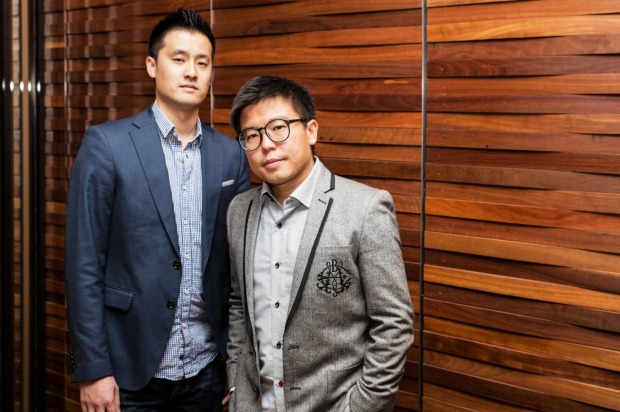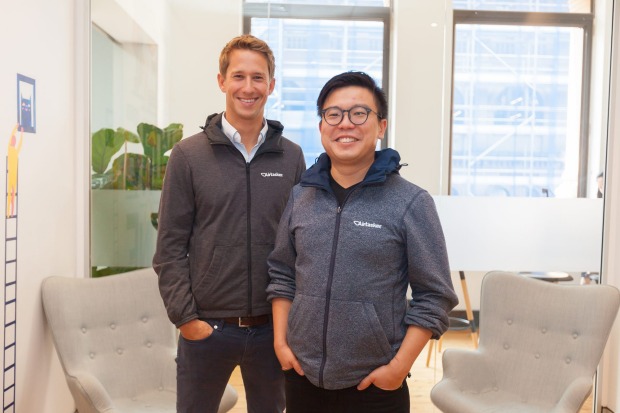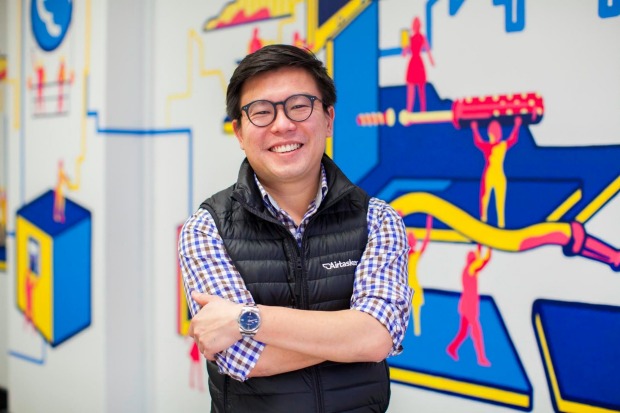In a series of stories, we look at how players in the gig economy are innovating in their own businesses.
Artificial intelligence is at the heart of everything Airtasker does.
The online marketplace – where people post jobs, ranging from household chores to white-collar work, which individuals pitch for – has two AI systems, called Carl and Alan, that reduce the onus on employees, says chief executive Tim Fung.
“We have such free-flowing information on Airtasker that it’s hard to know what a cleaning task looks like,” Fung says.
“But Carl can look through millions of tasks and categorise them and Alan figures out with a high degree of accuracy which are bad and need to be reviewed by a human.
“Anything that’s in the adult industry or is against the law is moderated immediately.”
By categorising the tasks, users can more easily find the available jobs on Airtasker they’d like to bid for. Someone looking for cleaning work can enter “cleaning” in the search bar and then filter the results based on price and proximity to their location.
Airtasker was founded in 2012 and has created a community of 2 million people. It generates more than $100 million of transactions a year.
In the past six years the company has raised $67 million from high-profile backers such as Seven West Media, SkyfieldCapital, Exto Partners, Morning Crest Capital and Black Sheep Capital.
Last October it closed a $33 million round, which has supported its expansion to Britain.

Tech-driven business
Excluding London, Airtasker is growing at more than 100 per cent year-on-year. In its first five weeks of operation in Britain it has achieved as much as in its first three years in Australia.
Its ability to grow quickly is in part due to the lean structure of the business, where the tasks completed through the platform are performed by individuals, not staff members.
“While we have a localised model, the IP [intellectual property] and expertise we’ve generated is redeployable,” Fung says.

“Airtasker is a tech-driven business, so we have a fixed cost base made up of data scientists, engineers and product managers, which is still hefty, but our operating model is extremely efficient and we don’t need huge teams of people, just localised markets.”
Workers on the platform can typically be sorted into three types: skilled professionals, particularly tradesman, but increasingly white-collar professionals who want to work on their own terms or are between jobs, students and semi-retirees.
Unlike some gig economy players that host meet-ups or throw events for their community members, Airtasker’s revenue model means its users are already united around a common vision and don’t need community-building events, Fung claims.
The platform earns money by taking a percentage of each job, so the more people earn, the more Airtasker earns.

Fung also says, unlike a sharing economy business that’s targeting one industry such as cleaning, or driving, it doesn’t make sense for the platform to offer training to users because it’s not an expert in plumbing, cleaning, digital design, or any number of jobs being advertised on the platform.
Create autonomy
When Airtasker was co-founded by Fung and Jonathan Lui as a two-person operation in a “shoe-box office”, it had a “waterfall” structure, where teams worked separately based on discipline: the design team would pass work to engineering and then engineering would pass it to marketing.
But as the company started to grow quickly, this structure was unsustainable.
“When we reached 30 people, with the waterfall structure, the weakest link constrains what everyone else is doing, so you have to break it apart and create autonomy so that people can solve the issue in front of them on a day-to-day basis,” he says.
The transition to a new structure, in which teams incorporated engineers, designers and marketers (similar to agile teams), meant slowing down the company for two months, but Fung says it was worth it.
“When we looked back six months later, and we’d hit 70 people, we knew we’d have been totally broken if we hadn’t made the changes,” Fung reflects.
Since then the company has grown to 165 people, including five in its new London office, and once again has hit a point in its growth where it’s had to rethink its hierarchy. Fung says it’s added too many “titles” and is in the process of winding this back.
So far, Fung says, his biggest leadership lesson has been learning to apply “radical honesty” when dealing with staff.
“You do more damage nine times out of 10 by not telling them the truth,” he believes. “Don’t be obnoxious, but tell them exactly what you need to say and don’t be afraid to have those tough conversations.”
Source: Financial Review




